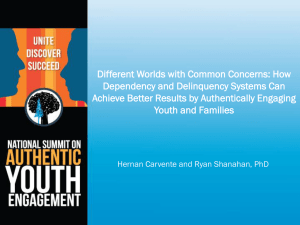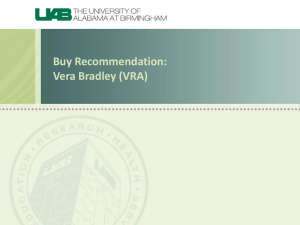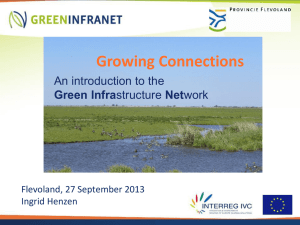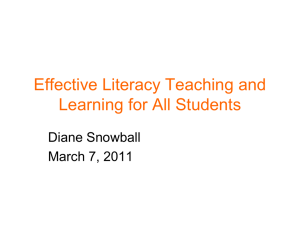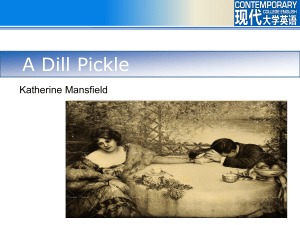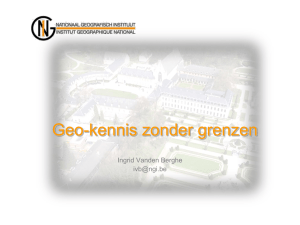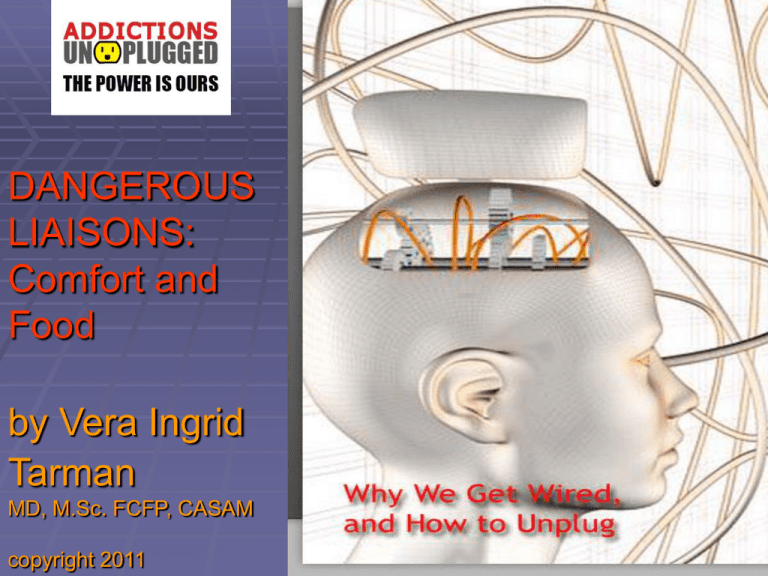
DANGEROUS
LIAISONS:
Comfort and
Food
by Vera Ingrid
Tarman
MD, M.Sc. FCFP, CASAM
copyright 2011
Copyright Vera Ingrid Tarman, 2010
ASAM definition of
Addiction
A primary chronic disease of brain
reward, motivation,memory and related
circuitry.
Dysfunction in these circuits leads to
characteristic biological, psychological,
social and spiritual manifestations.
This is reflected in an individual
pathologically pursing reward and / or
relief by substance use and other
behaviours
Copyright Vera Ingrid Tarman, 2010
Addiction
Inability to consistently Abstain
Impairment in Behavioural control
Craving or increased 'hunger' for drugs or
rewarding experiences
Diminished recognition of significant
problems with behaviour @ relationships
A dysfunctional Emotional response
Copyright Vera Ingrid Tarman, 2010
Quiz
Recent American and Canadian statistics
indicate that
2 / 3 of the population are overweight
(BMI of >25) or obese (BMI >30)
Rates of obesity have doubled from 1960s
(13 % to 32%)
Copyright Vera Ingrid Tarman, 2010
Copyright Vera Ingrid Tarman, 2010
Quiz
The death rate for eating disorders is
approximately
a) 5%,
b) 20%.
c) 50%,
d) minimal, any figure is just a scare tactic
Copyright Vera Ingrid Tarman, 2010
Quiz
What is the increased risk of death for
people suffering from obesity?
a) 10%
b) 50%
c) 80%
d) No difference. Diabetes, hypertension
occur in all weight groups
Copyright Vera Ingrid Tarman, 2010
Copyright Vera Ingrid Tarman, 2010
Food Addiction
What are the main foods that are
currently viewed as addictive
a) Sugars
b) Starches
c) Fats
d) Salts
e) Any binge food
f) All of the above
Copyright Vera Ingrid Tarman, 2010
Limbic: The nature reward pathway
Copyright Vera Ingrid Tarman, 2010
Reward Center
Reward system related to
matters of survival:
sex
food
safety
companionship, love, joy
Copyright Vera Ingrid Tarman, 2010
Neurotransmitters
Neurotransmitters involved in the brain and
reward pathway are…....
a) Serotonin
b) Dopamine
c) Endorphins
Copyright Vera Ingrid Tarman, 2010
Copyright Vera Ingrid Tarman, 2010
Drugs and the Reward Center
Drugs ‘hijack’ the reward center,
the traditional ‘rewards’ become
secondary
as these are not as intense and
concentrated as drugs
Copyright Vera Ingrid Tarman, 2010
food
sex
gambling
Copyright Vera Ingrid Tarman, 2010
Copyright Vera Ingrid Tarman, 2010
Food - Reward
Notice which foods enhance the reward
neurochemistry:
Serotonin: warm milk, pasta, potatoes,
bananas, turkey
Dopamine: sugar, white starches
Opiates: chocolate, sugar, dairy, spices
Copyright Vera Ingrid Tarman, 2010
Eating Disorders
and Obesity
The Big Clinical Question:
Are Eating Disorders and
Obesity an Addiction?
Copyright Vera Ingrid Tarman, 2010
Standard Treatments
Medications:
Appetite suppressants
(Dexedrine)
Hormone based drugs (Leptin)
Fat Absorption drugs (Orlistat)
Copyright Vera Ingrid Tarman, 2010
Standard Treatments
High dose anti depressants
(Zoloft)
Mood stabilizers (Topimax)
Naltrexone (Revia)
Copyright Vera Ingrid Tarman, 2010
Standard Treatments
Bariatric Surgery:
Inhibit absorption of food (gastric
bypass)
Or obstruct food intake (lap band)
Copyright Vera Ingrid Tarman, 2010
Standard Treatments
Behavioral:
Residential or community based
to moderate food intake of all
foods
Copyright Vera Ingrid Tarman, 2010
Treatment for Addiction
How would treatments differ if
eating disorders were viewed as
an Addiction?
Copyright Vera Ingrid Tarman, 2010
Copyright Vera Ingrid Tarman, 2010
Food Addiction
Copyright Vera Ingrid Tarman, 2010
Hunger
Hunger releases the hormone
gherlin from the stomach which
activates dopamine
This creates cravings
Food cues i.e. smells, sights, tastes
also creates cravings
Copyright Vera Ingrid Tarman, 2010
Sugar Addiction?
Acts like a Dopamine
Some studies show that overweight
people have a diminished dopamine
response
thus have more cravings
Copyright Vera Ingrid Tarman, 2010
Sugar Addiction?
Sugar also releases our own
endorphins
Fats have also been implicated
relieves pain and gives a sense of
well being
Copyright Vera Ingrid Tarman, 2010
Sugar Withdrawal
After a few weeks of sugar binging,
rats will show opiate withdrawal …
if given Naltrexone
Copyright Vera Ingrid Tarman, 2010
Satiation
The stomach also gives the feedback
to stop eating
A full stomach releases the hormone
leptin, leads to appetite satiation
Prader – Willi Syndrome
Copyright Vera Ingrid Tarman, 2010
Dieting:
a Gateway to Drugs?
During fasting, anticipatory
dopamine is not selective for food
rewards
dieting increases the rewarding
effects of most drugs.
Copyright Vera Ingrid Tarman, 2010
Why do Alcoholics Love Sugar?
Substitution!
Alcohol AND Food, enhances:
Endorphin
Dopamine
Serotonin
Copyright Vera Ingrid Tarman, 2010
Gateway for Drugs
Cross sensitization occurs with
amphetamines and sugar
when the rat are given
amphetamines,
Copyright Vera Ingrid Tarman, 2010
Summary:
Food Addiction
1. A Neurochemical excess of
serotonin, dopamine and
endorphins
2. heightens reward in the
limbic brain
Copyright Vera Ingrid Tarman, 2010
Summary of Food Addiction
3. Trigger Foods stimulate excess
neurochemicals.
4. This is exaggerated when starving,
over eating and purging
5. Binge of neurochemicals over ride
the normal checks and balances
Copyright Vera Ingrid Tarman, 2010
Summary of Food Addiction
6. Which fosters addictive
eating behaviors
7. Gateway to substance use
Copyright Vera Ingrid Tarman, 2010

